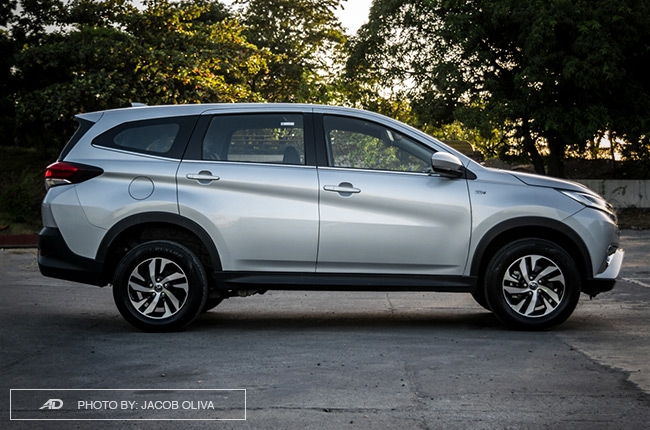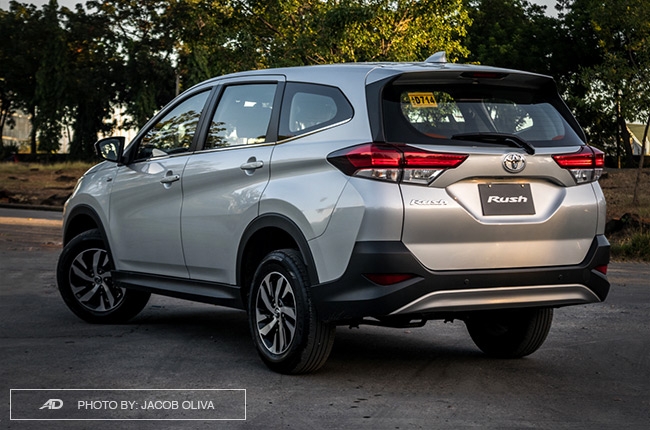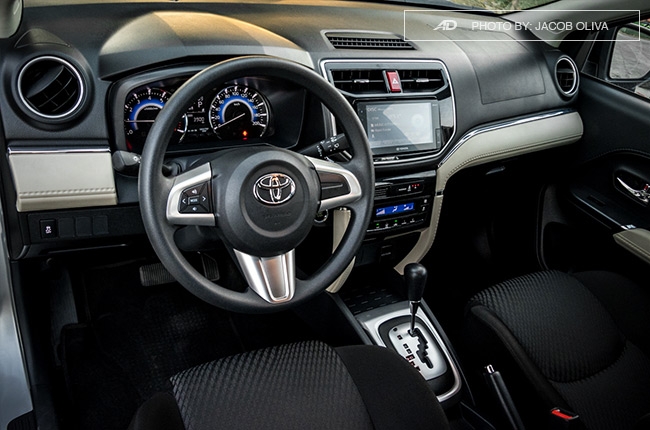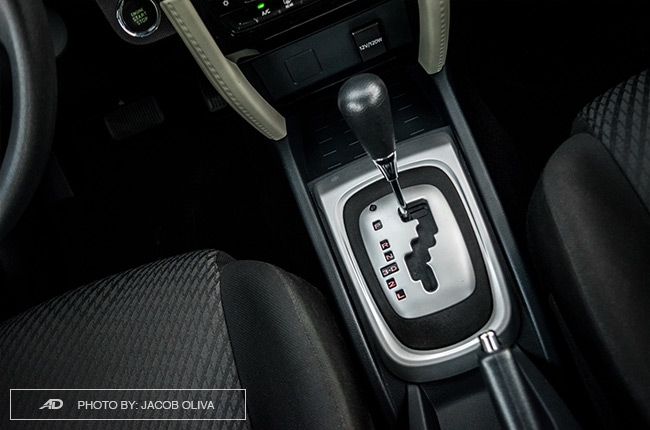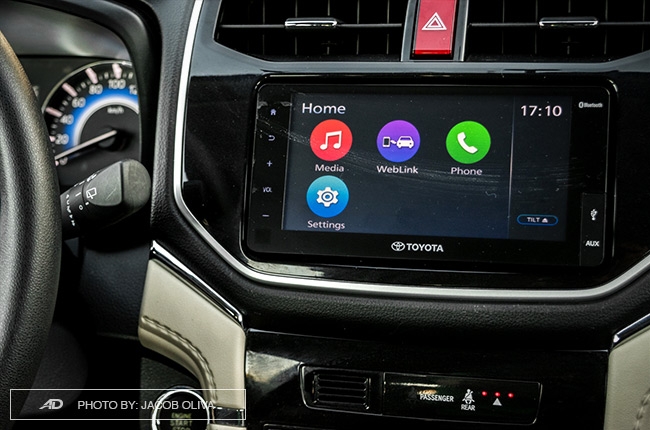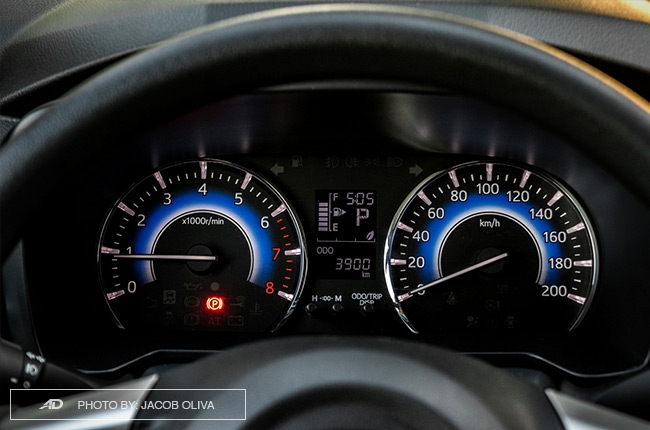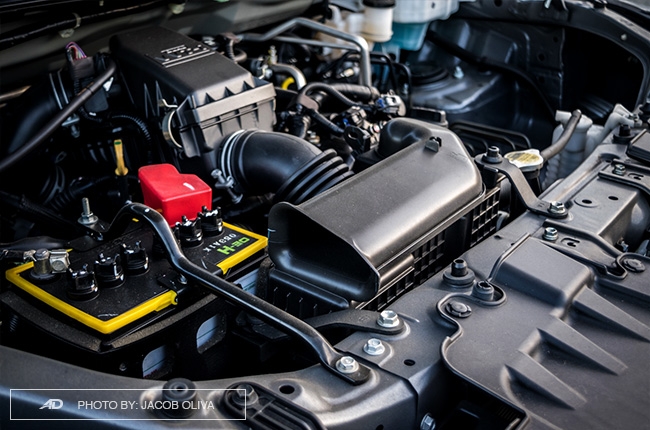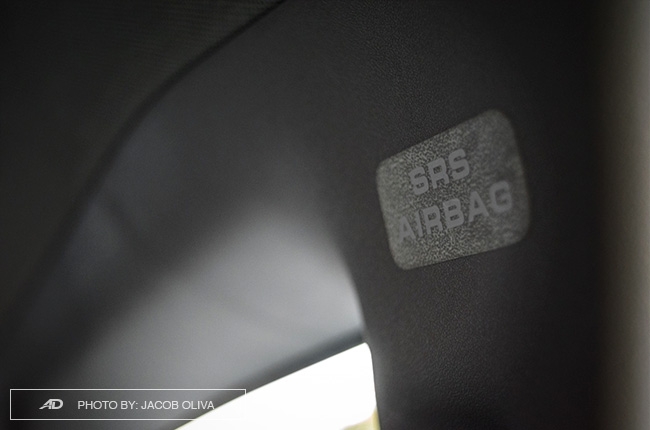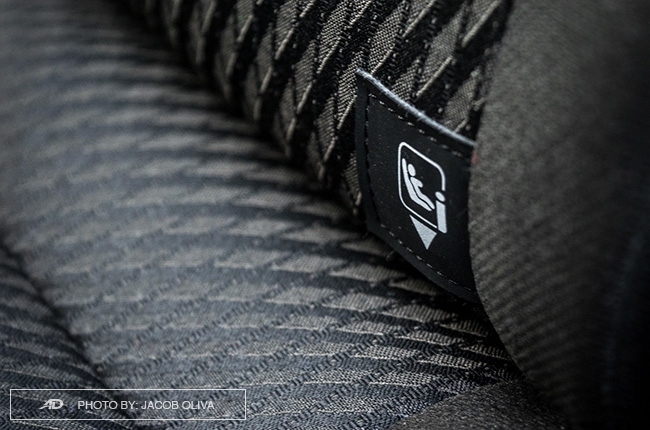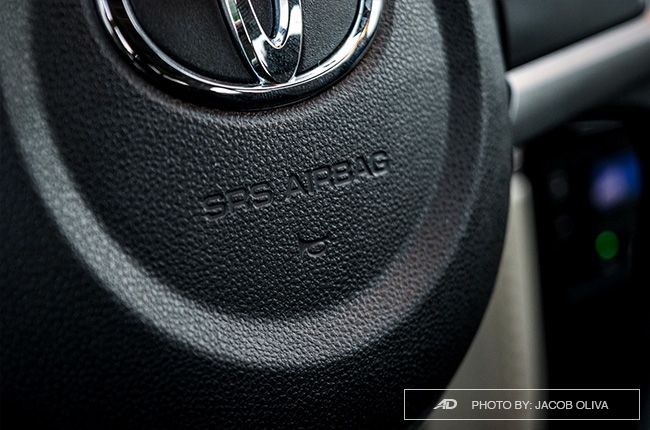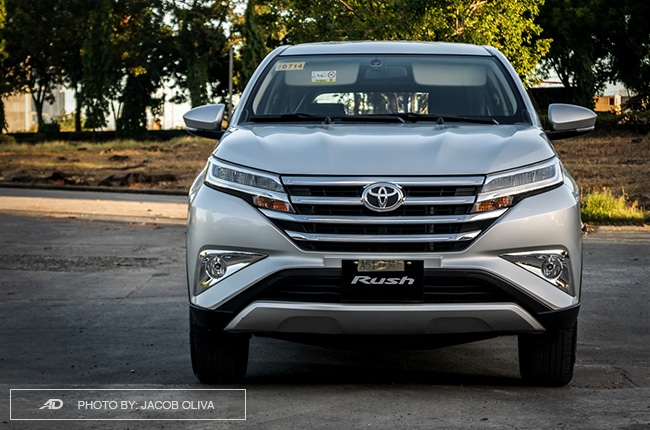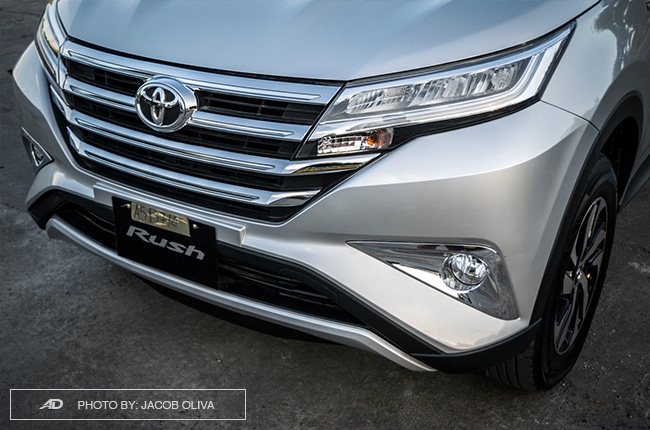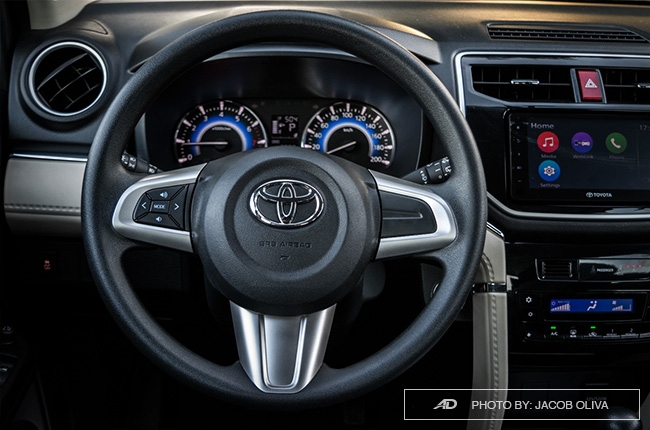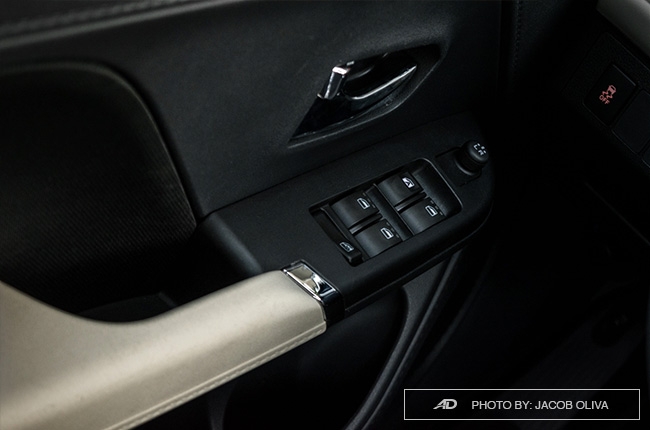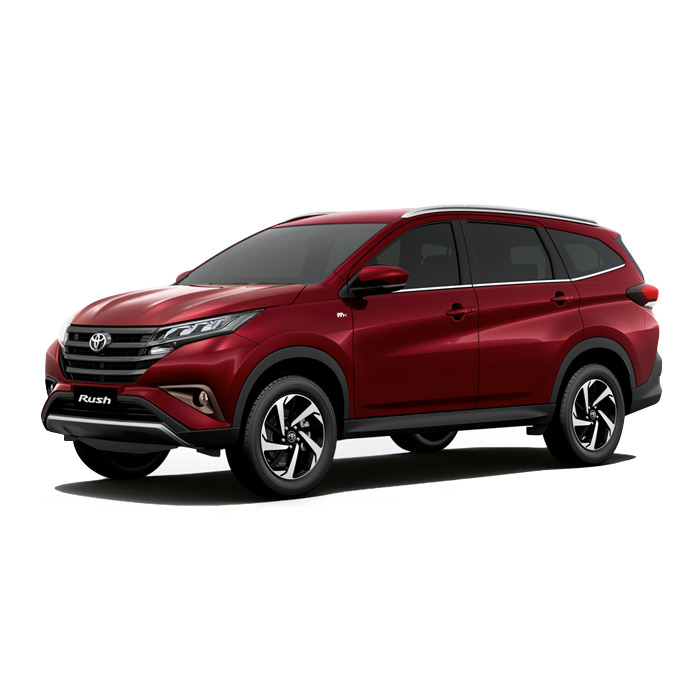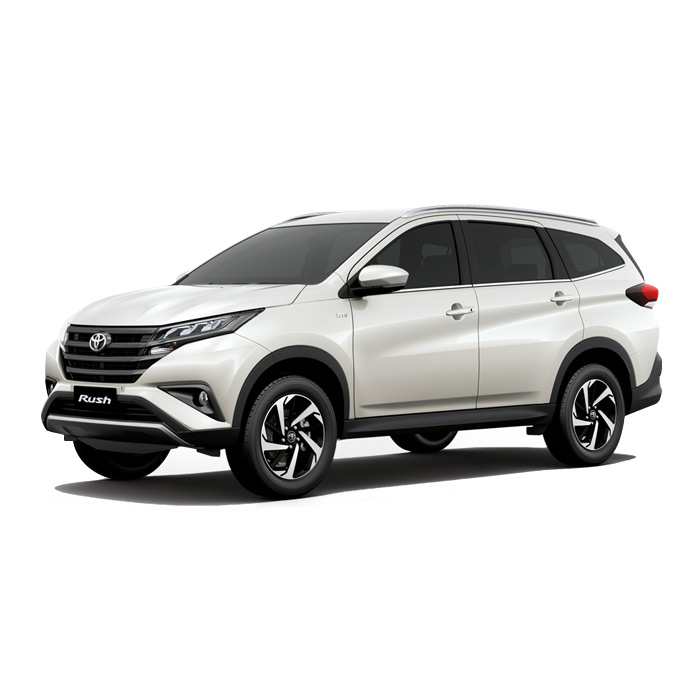
Having two similar yet different choices in the Toyota Rush lineup poses a huge dilemma for someone who’s up to buy the entry-level SUV: Should I go with the more affordable 5-seater or should I splurge and get the range-topping 7-seater? It’s a tough call, considering the things that come with the top-of-the-line G variant that I reviewed before, I’m thinking that there might be a number of features that will be missed when going for the lower variant. Or, will it, really?
Toyota Motor Philippines handed over the keys to the 2018 Rush E AT for a full review. Little did I know, it would be a pleasant surprise - P82,000-worth pleasant, that is.
Engine Output (HP), Acceleration, Transmission, Handling 3.5/5
Exterior & Interior Design, Quality, Fit and Finish, Ergonomics 3.5/5
Cabin Comfort, Suspension, NVH Insulation 3.0/5
Convenience Technologies, Active and Passive Safety Features 4.0/5
Amount of the vehicle you get for the price, Fuel Efficiency 3.5/5
- Better driving performance than the 7-seater.
- LED lighting is pleasant to the eyes.
- Plethora of safety features.
- 4-speed transmission limits the car's performance.
- It's a bit hard to find a comfortable driving position.
- Hard plastics populate the cabin.
Exterior
Frankly, the 2018 Rush E is hard to differentiate from the G variant. It has the same “Baby Fortuner” look with its high 220mm ground clearance, and beefy goodness that imposes an SUV appeal which a lot of people adore. It would take an eagle-eye individual to spot the differences between the two, which are actually just the smaller 17-inch rims, missing roof rails, and non-dark-chrome of the E variant here.
Even better, the E variant comes with LED taillights and headlamps with line guide that illuminate the road well at night. With these intact, the heavy flush of chrome on the fascia is very forgivable and easy to live with.
Interior
The interior of the Rush E closely resembles the G trim, sans the three-spoke urethane as opposed to the leather type of the pricier option. The generosity of the cabin space up to the second row and the flexibility of the seats (fold and stumble) put a smile on my face, along with the 13 cupholders found inside the car. As it is a 5-seater, there’s no third row, replaced by a huge 514-liter cargo space that could even rival compact crossovers.
Even the letdowns are carried over, though, such as the non-telescopic steering wheel (for easy adjustment of driving position), the shower of hard plastics, and the white faux-leather accent that breaks the dark flow of the dashboard and doors.Ride comfort, on the other hand, isn’t better with the lighter 5-seat E variant, but filling it with passengers would greatly improve the case. Multi-link rear suspension plus body-on-frame construction is a bouncy combination, really, more so on a lighter car. Good thing, NVH is well-isolated inside the car.
Technology
With the Rush E’s less price tag comes fewer convenience features for the driver, but that’s not a problem at all. The manual air conditioning works fine even at high noon, and so are the manual headlamps and wipers. Handsfree call buttons are also removed on the steering wheel, but audio controls remain. The Optitron gauge clusters and LCD multi-information displays provide sufficient driving information as it is easy on the eyes.
As for the infotainment system, it’s the same good-looking 7-inch touchscreen that’s filled with bright colors. It has the same connectivity via USB (for Apple only) and Bluetooth. Sound is then produced via six speakers, which is two-speaker less than before. It’s still decent-sounding, though.
Driving and Handling
This is where it gets interesting. Though the 102-hp 1.5L 2NR-VE Dual VVT-i gasoline engine is present throughout the Rush’s lineup, the E variant drove differently – it’s way, way better. You can attribute this to the lack of a third row, which made the car lighter.
With this, it wasn’t hesitant to move from a standstill; the 134 Nm of pulling power was easily felt at the earlier parts of the RPM range. But just the same as the G, the limited range of four-speed automatic transmission proved to be a weak point as the Rush can only do so much at higher speeds. Braking, on the other hand, was safer and easier with the lighter body to put to a halt. Handling was also better and more precise than before, but can still be improved when running at speeds. But then again, just keep your hands on the steering wheel to keep the car composed, especially on highway runs.
Safety
As with most of the newly-launched Toyotas this year like the Vios and the Yaris, safety is the top priority with the 2018 Rush. Even as a lower variant, the E trim gets all the safety goodies that the ranger topper has, and that include six airbags, vehicle stability control (with Traction Control, Hill Start Assist, and Emergency Stop Signal), and the standard ABS with EBD. It also comes with alarm and immobilizers. These things aren’t readily felt when you drive the car, but it’s nice to know that they’re there in case the push comes to shove.
What you’ll miss in the E variant, though, is the rear parking camera. You’ll have to settle with proximity sensors on this one, as is the lack of smart entry, which isn’t really a problem since you can still use the remote to unlock the car.
Fuel Economy

Since the Rush E is lighter, it also returned better fuel economy numbers than the heavier 7-seater variant. An hour of driving on a traffic-laden EDSA returned 7.9 km/L, while faster runs at around 60 km/h read back 11.2 km/L. Highway speeds at an average and kind-of-steady 90 km/h registered 15.2 km/L. Not the best out there, but still way better than the G trim.
Verdict
The 2018 Toyota Rush E AT has a price tag of P988,000, which is admittedly attractive because it doesn’t cross the seven-digit price point. Going for the manual variant will save you P40,000 and you’ll pretty much get the same features. Now, with all the things that it can offer, is it really the better and wiser choice? Cliche as it may sound, the answer would really depend on how you aim to use this car. If you’re a big family or a typical Filipino family who’s close to the titos and titas, lolos and lolas, the seven-seater Rush would be the suitable choice. However, if there’s absolutely no need for seven seats and you’ll likely bring more stuff in your car than people, the Rush E is definitely the real deal. With rear-wheel-drive, bigger cabin space, and more flexibility, it can even transcend segments and rival the staple subcompact crossover nameplates.
Toyota Rush Exterior Gallery
Toyota Rush Interior Gallery
Specifications
Engine
1.5 LFuel Type
GasolinePerformance
102 hp @ 6,000 rpmTransmission
Automatic-
Summary
-
Name Toyota Rush 1.5 E AT Body Type MPV Price ₱1,052,000 Transmission Category Automatic -
Engine
-
Engine Size 1.5 L Displacement 1,496 cc Number of Cylinders 4 Number of Valves 16 Transmission Type 4-Speed Automatic -
Performance
-
Drivetrain Rear-Wheel Drive Max Output (hp) 102 hp @ 6,000 rpm Max Torque (nm) 134 Nm @ 4,200 rpm -
Economy & Environment
-
Fuel Type Gasoline Emissions Standard n/a Fuel Capacity 45.0 L *Combined Fuel Consumption 8.3 km/L *brand manufacturer claim
-
Dimensions
-
Length 4,435 mm Width 1,695 mm Height 1,705 mm Wheelbase 2,685 mm Turning Circle 10 m Ground Clearance 220 mm Trunk Capacity 220 L Number of Doors 5 Number of Seats 7 -
Safety & Security
-
Driver's Airbag 1 Front Passenger's Airbag 1 Side Airbag 2 Curtain Airbag 2 Knee Airbag Auto Brake System Electronic Brake Distribution Anti-lock Brake System (ABS) Anti-lock Brake System with Electronic Brake-force Distribution
Immobilizer Security Alarm Stability Control Electronic Door Locks Speed Sensing Door Locks ISOFIX Lane Departure Warning System Blind-Spot Detection System -
Features
-
Cruise Control Front Parking Sensors Rear Parking Sensors Leather Upholstery Push Start Button Wheel Size 16 in Wheels Metal Type Alloy Airconditioning System Auto A/C Entertainment System Touch Screen 7" Display Audio with CD and MP3 via 6 speakers Connectivity Aux, USB, and Bluetooth w/ Weblink Connectivity for iOS and Android Navigation Ready Warranty 3 Years (100,000 km) Keyless Entry Roof Rack Sunroof Electric Adjustable Seats Power Steering Power Windows Power Outlet Steering Wheel Audio Control -
Technology
-
Active Park Assist Hill Start Assist AWD Modes n/a Tire Pressure Monitoring Heads-up Display Power Liftgate Start-stop System
Colors
Latest Review
-
2024 Lynk & Co 06 Hyper Halo AT Review / Review
We took the Lynk & Co 06 for a spin to see if it’s all style and no substance, or a capable contender.
4.1 / 5 -
2025 BAIC B30e Dune 4x4 HEV Review / Review
After 1,000 km behind the wheel of the BAIC B30e Dune, we share what we loved about this hybrid and what we don’t.
4.2 / 5 -
2025 MG G50 Plus Lux DCT Review / Review
Can affordable price and VIP aspirations blend together? We find out in this review of the MG G50 Plus Lux DCT.
4.0 / 5
Popular Articles
-
Cheapest cars under P700,000 in the Philippines
Jerome Tresvalles · Sep 02, 2024
-
First car or next car, the Ford EcoSport is a tough package to beat
Jun 18, 2021
-
Car Maintenance checklist and guide – here’s everything you need to know
Earl Lee · Jan 12, 2021
-
Most fuel efficient family cars in the Philippines
Bryan Aaron Rivera · Nov 27, 2020
-
2021 Geely Okavango — Everything you need to know
Joey Deriquito · Nov 19, 2020
-
Family cars in the Philippines with the biggest trunks
Sep 20, 2023
-
Head to head: Toyota Rush vs. Suzuki XL7
Joey Deriquito · Oct 28, 2020
-
Why oil changes are important for your car
Earl Lee · Nov 10, 2020
-
2021 Kia Stonic — What you need to know about it
Joey Deriquito · Oct 16, 2020
-
Top 7 tips for buying a used car in the Philippines
Joey Deriquito · Nov 26, 2020


